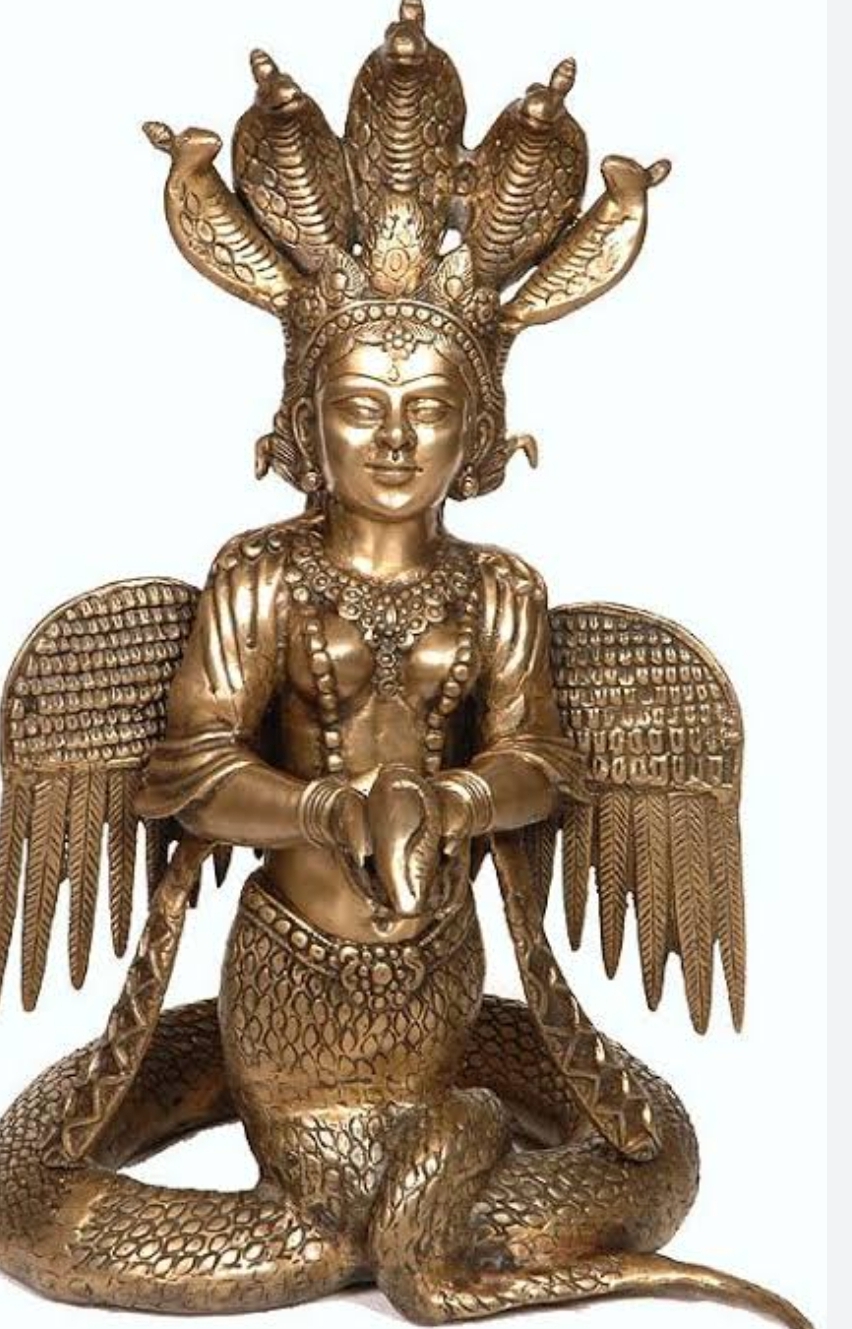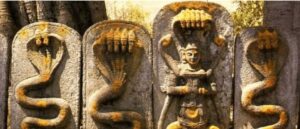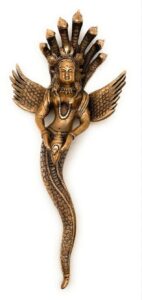Naga Legacy in Indian Mythology
The term “Naga” first appears in the Rigveda, one of the oldest Vedic texts, where it is used to refer to a group of people associated with snakes.
Nagas are believed to be the offspring of the sage Kashyapa and the serpent woman Kadru. This lineage established their place in the pantheon of Hindu deities.Lord Shiva is often associated with Nagas, and he is depicted wearing serpents as ornaments. The snake around Shiva’s neck represents the uncontrolled passions of humanity that he has conquered.
Naga , in Indian mythology, are a group of serpent deities or beings often depicted as half-human and half-snake. They hold a significant place in Hinduism, Buddhism, and Jainism, and their stories and symbolism are rich and diverse.
Here is a detailed exploration of Nagas:
Origin and Significance:
– The word “Naga” is derived from the Sanskrit word “nāga,” which means “serpent” or “snake.”
– Nagas are considered powerful and benevolent beings in many Indian traditions, associated with water, fertility, and protection.
– They are often depicted as guardians of hidden treasures, both material and spiritual, and are believed to dwell in underground realms, lakes, and rivers.
Role and Symbolism:
– Nagas are associated with various aspects of nature, including water bodies, rain, and fertility. They are often linked to the life-giving properties of water.
– They are considered protectors of the environment and are believed to have the ability to control weather, particularly rainfall.
– Nagas are revered as guardians of dharma (righteousness) and are often associated with the deities of the Hindu pantheon.
– The serpent symbolizes the life force (kundalini) that resides within each individual. In this context, Nagas represent the awakening of spiritual energy.
Naga Deities and Legends:

– Ananta Shesha: Ananta Shesha, also known as Sheshanaga, is the cosmic serpent who serves as the bed of Lord Vishnu in Hindu cosmology. He symbolizes the eternal, unending nature of time and the universe.
– Vasuki: Vasuki is another prominent Naga, often used as a rope in the churning of the cosmic ocean (Samudra Manthan) to obtain the elixir of immortality (amrita).
– Adishesha: Adishesha is the divine serpent on which Lord Vishnu reclines in the cosmic ocean. He represents the support and protection provided by the divine.
– Nagaraja and Nagarani: These are the king and queen of the Nagas, often worshipped in various temples and rituals. They are believed to bless devotees with prosperity and fertility.
Worship and Festivals:
– Nag Panchami is a Hindu festival dedicated to the worship of snakes and Nagas. It usually falls in the Hindu month of Shravan (July-August).
– Devotees offer milk, flowers, and other offerings to snake idols or images as a form of reverence and protection from snake bites.
Buddhist and Jain Traditions:
– Nagas are also mentioned in Buddhist and Jain mythology, often as beings who interact with humans and play roles in their stories.
– In Buddhism, Nagas are sometimes depicted as protectors of the Buddha and the Dharma.
Contemporary Significance:
– Nagas continue to be an integral part of the cultural and religious fabric of India and other countries with Hindu and Buddhist traditions.
– They symbolize the harmony between the human and natural worlds and the interconnectedness of all life.
Association with Water:
– Nagas are closely associated with water bodies, especially underground water sources, rivers, and lakes. They are believed to inhabit these watery realms, guarding their treasures.
– Many temples dedicated to Nagas are located near water bodies, and rituals involving offerings of milk and flowers are performed to appease them.
Connection to Rains and Agriculture:
– Due to their association with water, Nagas are often seen as rain deities. Adequate rainfall is crucial for agriculture in India, so Nagas are considered protectors of crops and agricultural prosperity.
– In some regions, Nag Panchami is celebrated as a way to invoke Nagas for rain, ensuring a bountiful harvest.
Role in Mythological Narratives:
– Nagas are featured in various mythological stories and epics. For example, in the Mahabharata, Arjuna is said to have received divine weapons from the Nagas during his exile.
– In Hindu cosmology, the serpent Shesha is believed to support the Earth on its hood.
Naga-Kanya (Naga Princesses):
– In some legends, Nagas are believed to have offspring called Naga-Kanyas or Naga princesses. They are often depicted as beautiful serpent-women.
– The Naga-Kanyas are sometimes seen as protectors of sacred places and are revered in rituals.
In essence, Nagas represent a complex and multifaceted aspect of Indian mythology, embodying elements of nature, protection, fertility, and divine significance. Their influence extends to various aspects of life in the Indian subcontinent, from religious practices and rituals to cultural expressions and architectural designs.
Kubera God Of Wealth And Its Magnificent City Alakapuri




